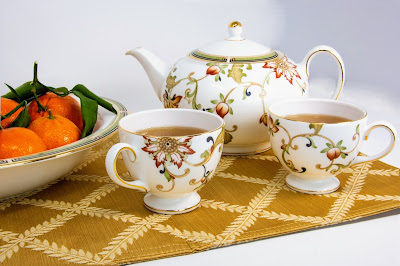If you are from Florida or have ever driven a long distance through the state, maybe you’ve been lucky enough to pass though some of our beautiful orange groves when they were in blossom. The fragrance of those flowers when they're all in bloom is like nothing else in the world. I’ve even heard it said that it’s what we smell when we enter heaven!
Although the sight of these groves may be familiar to some, few of us are likely to ever have seen an orange grove being harvested. It’s not something you’re likely to catch sight of, in part because workers are quite efficient and it actually happens quite fast. Check out this video of orange pickers at work:
In many ways, citrus picking hasn’t changed all that much from how it’s been done for generations. First we wait until the oranges are ripe and in peak condition, since citrus does not ripen any further once it's off the tree. This isn’t just a matter of “looking” or even of tasting, though of course we do taste the fruit to check on its condition. In fact, this is done using a scientific process. We assess both the sweetness and the acidity of the fruit and determine that ratio is just right.
Out in the Groves
By Hand or With Machines?
In more recent years, innovators have also developed mechanical orange harvesters that shake the fruit off the trees, reducing labor costs. However, these don’t work perfectly in many cases. Orange groves are not like vegetable fields that get replanted every rear; rows and trees may be irregular, and the work is not easy to standardize. Mechanical harvesters can damage the delicate fruit and trees.
Here at Florida Fruit Shippers, our oranges and other citrus are always hand-picked. While mechanical harvesters have their place due to their increased efficiency, beautiful gift oranges, tangerines, honeybells, and grapefruit like ours require a little more tender loving care to keep them in perfect condition. We also want to be able to look over the fruit to make sure it meets our standards. Nothing substitutes for the personal touch.
How to Pick if You Have Your Own Trees
If you’re lucky enough to have your own citrus tree or trees, the process to harvest the fruit goes like this. First you’ll want to make sure that the fruit is ripe; taste a few fruit to make sure they are sweet and juicy. You’ll want to start this as soon as they color up, but also remember that color is not always a good indicator of ripeness with citrus. A little cold weather is said to sweeten citrus, but it can also harm the ripe fruit if it gets too cold, so if you live in an area that freezes, be cautious. You wouldn’t want to lose the whole crop.
To pick, use a gentle twisting motion; you don’t want to “plug” the fruit. What do we mean by “plug”? That’s when the “end” of the orange comes off when you pick and leaves a little hole at the top of the fruit, exposing a little bit of the interior. This isn’t a disaster, but it does mean your fruit won’t keep long.
The biggest problem you may have at harvest as a home grower is reaching the fruit on taller trees. There are special devices for this, but I notice many people just don’t pick those high-up fruit. This isn’t an issue at first (though citrus trees take some time to bear a good crop) but will become one as the tree gets older and bigger.
Don’t feel like “farming” your own, or don’t live somewhere where this is possible? No worries. You can always order some beautiful fresh citrus by the box, crate, or gift basket. The only “picking” you’ll do is picking out your favorite.








